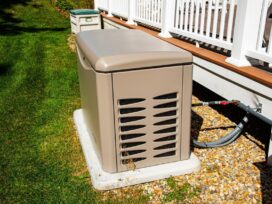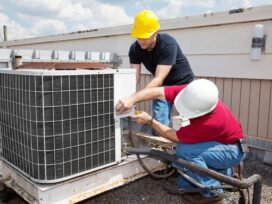
The Complete Guide on residential Heat Pump Installation
Heat pumps are becoming increasingly popular every year, and for a good reason – they offer many benefits that other heating systems can’t match. This blog will discuss everything you need to know about heat pump installation, including the different types of pumps available and the benefits of installing them. We’ll also give tips on choosing the right pump for your home.
This pump is a mechanical device that transfers heat from one place to another. It uses a refrigerant to absorb heat from the air or ground and then compress it to raise its temperature.
Types of Heat Pumps
There are two main kinds of heat pumps – air source and ground source.
- Air Source Heat Pumps: Air source pumps work by extracting heat from the air outside your home. They’re usually much easier to install than ground source pumps, as they don’t require digging or major construction work. These are also less expensive to operate than ground source pumps, making them a good choice for budget-minded homeowners. The main drawback of these pumps is that they’re not as efficient in very cold weather. These are available in two different types – split systems and packaged units. Split system units have an outdoor compressor unit and an indoor air handler, while packaged units have everything in one self-contained unit.
- Ground Source Heat Pumps: Ground source/geothermal pumps extract heat from the ground using a system of underground pipes called a loop field. These are much more efficient than air-source pumps, making them a good choice for homeowners who want to save money on their energy bills. However, the downside of these pumps is that they can be expensive to install, requiring a lot of digging and other construction work.
Benefits of Heat Pump Installation
Heat pump installation offers many advantages over other heating systems, including:
- Efficiency: One of the biggest advantages of cooling systems is that they’re very efficient. They use less energy than traditional pumps, so you’ll save money on energy bills. These pumps can cut your heating costs by up to 50{f72c3bad9bedd2696c12410b2a9f18ea5e1c76129c8f30749ceb2ebcb0501ee1}.
- Environmentally friendly: These pumps are much more environmentally friendly than traditional heating systems. They don’t release harmful emissions into the air so they won’t contribute to climate change.
- Long lifespan: They have a very long lifespan. With proper maintenance, these pumps can last for 20 years or more. It means you won’t have to worry about replacing your heating system soon.
- Low maintenance: These pumps don’t require much maintenance and don’t need to be replaced as often as other heating systems.
Now that you know more about heat pumps, you can decide if installing one is the right choice for your home.
Tips to Choose the Right Heat Pump
Remember a few things when choosing a heat pump for your home.
- First, you’ll need to figure out what kind of pump is right for you – air source or ground source. If you live in an area with cold weather, you may opt for a ground source pump, as these pumps are more efficient in very cold weather. However, an air source pump may be better if you’re on a budget.
- Then, you’ll also need to decide what size cooling system you need. Cooling systems are available in various sizes, so choosing one that’s big enough to heat and cool your entire home is important. However, you don’t want to choose an aspirator that’s too big, as it will be less efficient and cost more to operate.
- You’ll need to determine what features you want in your cooling system. For example, some pumps come with built-in thermostats, while others have remote controls. Some also have filters that can remove allergens and other pollutants from the air. So, take some time to think about which features are most important to you, and then choose a pump that has them.
Conclusion
A heat pump is the best way to improve energy efficiency and lower heating costs. Heat pump installation can be a complex and daunting task, but with the right information and guidance, it can be a relatively easy process. With a little planning and preparation, you can have your new pump up and running in no time.







